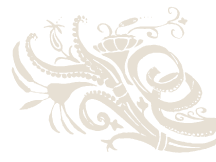Guided tours
Individual visitors and private groups
The team of the Archaeological Museum will be pleased to guide you through the collection. Appointments by arrangement...
Contact
Birthday Parties
(ages 10-14)
Guided tours for children's birthday parties are also available for those who are particularly interested. Please let us know of any special interests of the birthday child!
Please contact us for further information.
Contact
For children and school classes
Special museum educational offers as well as guided tours for younger and older archaeologists are available. Close cooperation - as already contractually agreed with the Alexander-Hegius-Gymnasium in Ahaus and the Freiherr-vom-Stein-Gymnasium in Münster - is also possible.
Contact
Greek Everyday Life
(especially for young people from approx. 12 - 15 years; duration approx. 2 h)
This museum educational programme gives pupils the opportunity to actively and intensively deal with the everyday life of the Greeks in antiquity and to acquire adequate knowledge. Divided into four working groups, they deal with the world of sport, clothing, childhood and gender-specific everyday worlds. In doing so, the pupils should not only grasp the respective topics through active action and learning - e.g. by trying on Greek garments or trying out Greek children's toys - but also be put in a position to communicate their newly acquired knowledge to another learning group.

Roman everyday life
(especially for young people from approx. 12 - 15 years; duration approx. 2 h)
This museum educational programme gives pupils the opportunity to actively and intensively deal with the everyday life of the Romans in antiquity and to acquire adequate knowledge. Divided into four working groups, they deal with the world of sport and the self-representation of cities, education and theatre, the cult of the dead and imperial representation. Finally, Roman garments (tunica, toga, calasis, stola and palla) are presented and tried on. In this programme, the pupils should not only grasp the respective topics by actively acting and learning - especially by dealing with original pieces - but also be enabled to communicate their newly acquired knowledge to another learning group.

The Roman Imperial Period
(especially for young people from approx. 14 - 17 years; duration approx. 2 h)
Roman emperors were masters of propaganda in both image and writing. The programme on the Roman Empire aims to give pupils an insight into the interplay between these by means of central genres such as the portrait of the emperor, the jewellery stones or the coins. The use of myths to legitimise rule is also addressed. On the basis of selected examples, students will learn how to deal with Latin inscriptions - a special challenge for Latin classes, which of course are not provided with translations.

Alcohol in antiquity
(from approx. 14 years)
The use of alcohol was always controversial in antiquity. On the one hand, intoxication with alcohol was considered to be an experience of the power of the god of wine, Dionysus, on the other hand, even great men in world history such as Alexander the Great sometimes became so addicted to wine that they got completely out of control, which their contemporaries already resented. In a relaxed discussion situation, central aspects of ancient drinking culture are conveyed, which can also be of importance for today's critical approach to the drug alcohol. In a workshop, pupils are offered various traditions on the topic - texts, pictures, artefacts - in order to then work out to what extent they themselves can learn from history.

Ancient costume
(for all ages)
In this hands-on programme for all ages, the Archaeological Museum offers an overview of ancient Greek and Roman costume. Beginning with the manufacture of clothing, authentically reconstructed garments are explained in terms of how they functioned and how they were worn, and are demonstrated on volunteers. In addition, comparisons with contemporary image carriers such as statues and vase paintings help to verify the way they were worn or certain details.
Greek men and women wore a chiton. A typical female garment is also the multifunctional peplos. The cloak Himation protected from the cold.
The Romans adopted the Greek chiton called calasis as a woman's garment. Alternatively, a long women's tunica was worn. The male equivalent was cut shorter. Women also dressed outside the home with the stole and the palla. The status garment of every male Roman free citizen was the toga.
What are the differences to our clothes today? What do certain items of clothing or colours mean? From what raw materials and in what way were the clothes made? These and other questions are addressed in the programme.

The special offer
You have very specific ideas about a guided tour of the Archaeological Museum or want to use it for events. For example, discussion rounds in analogy to the Greek symposia in the museum rooms, which offered solid and liquid pleasures in addition to intellectual ones, have proven themselves. Talk to us...
Contact


